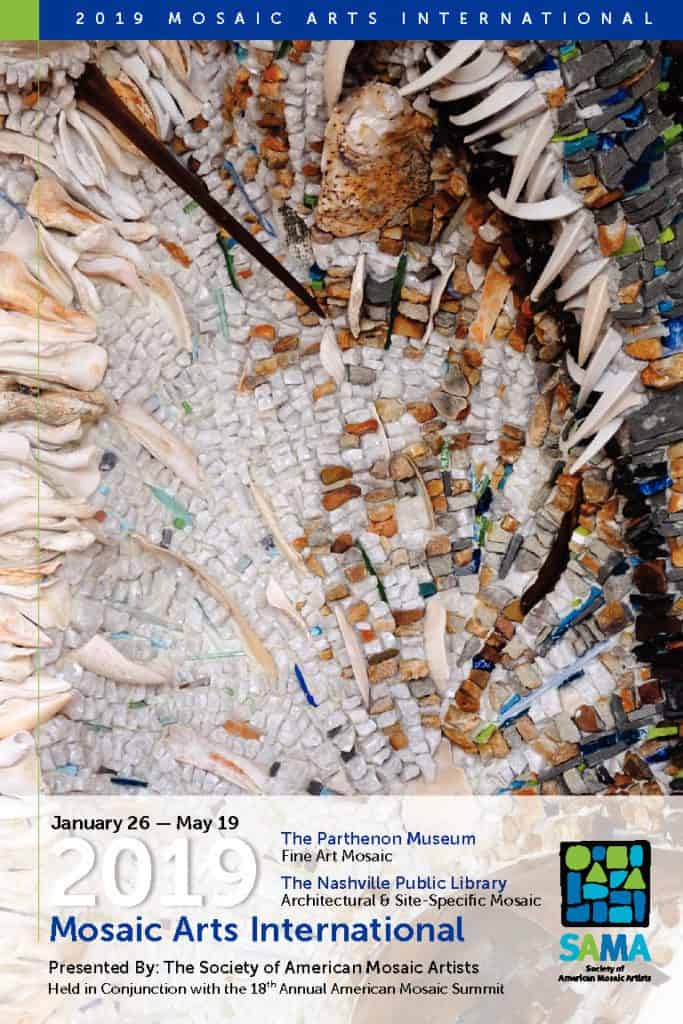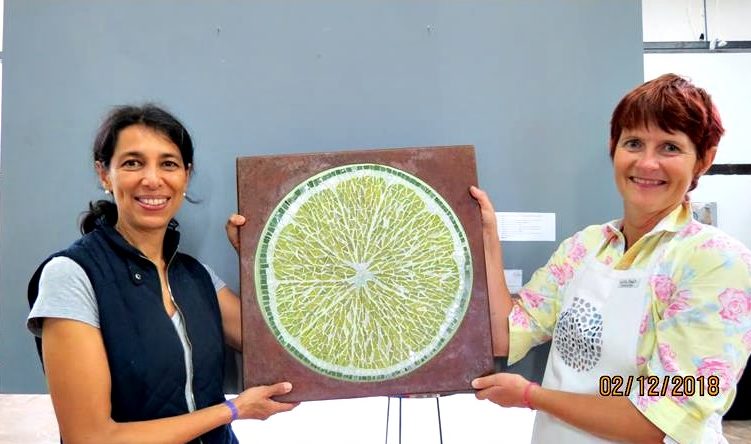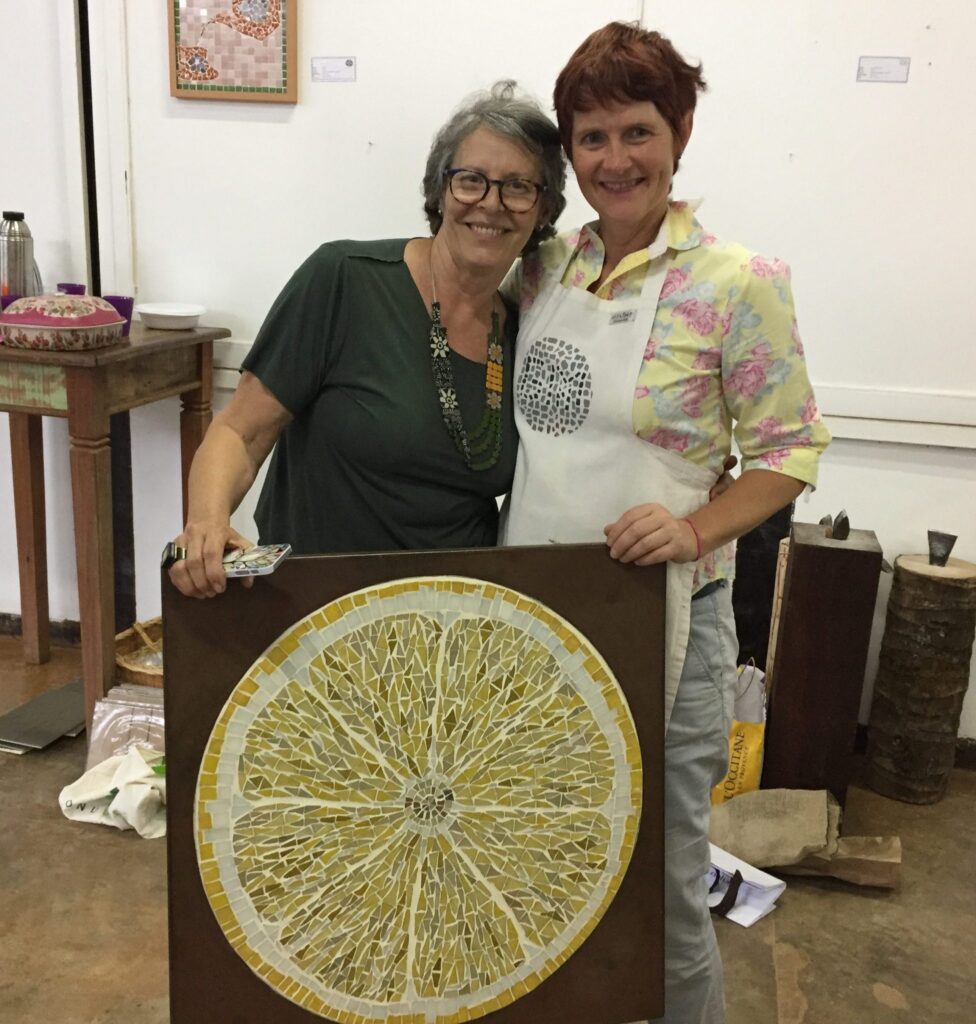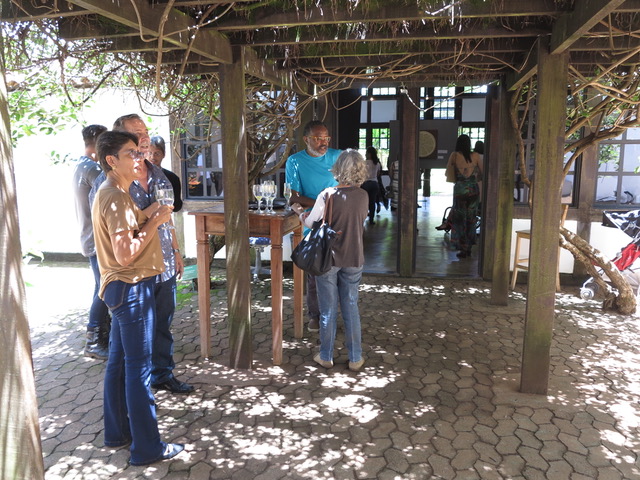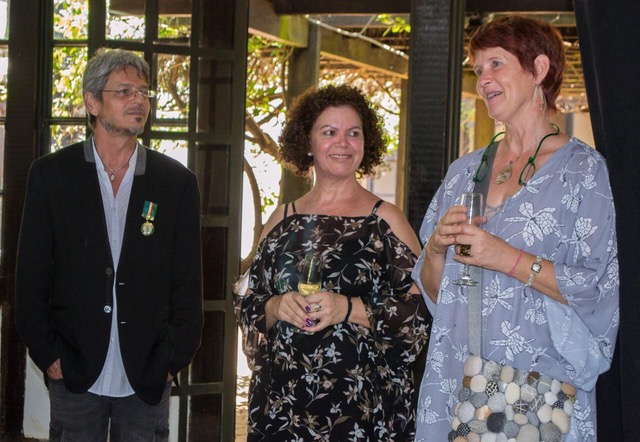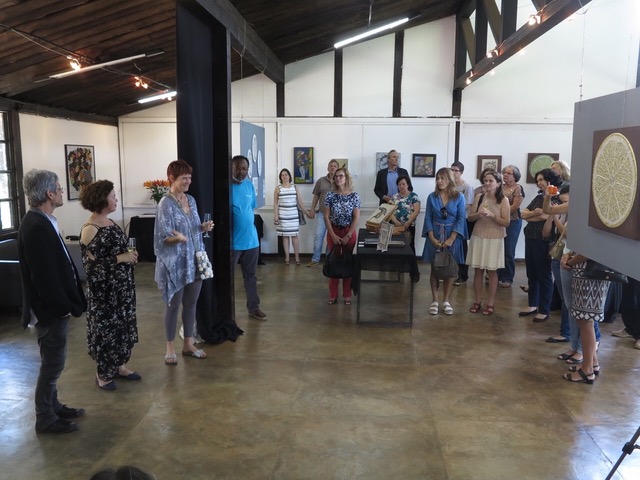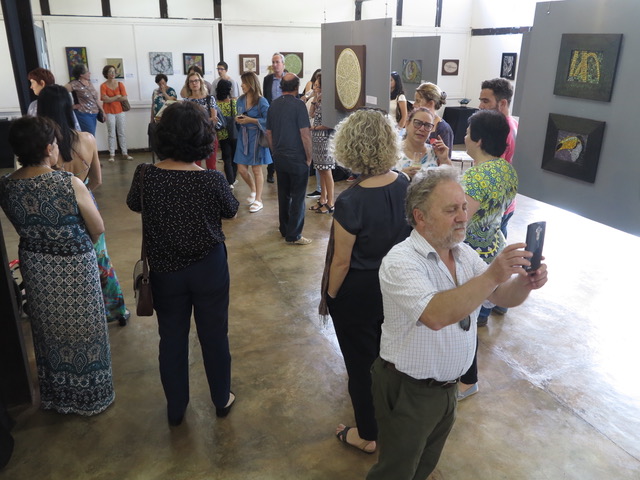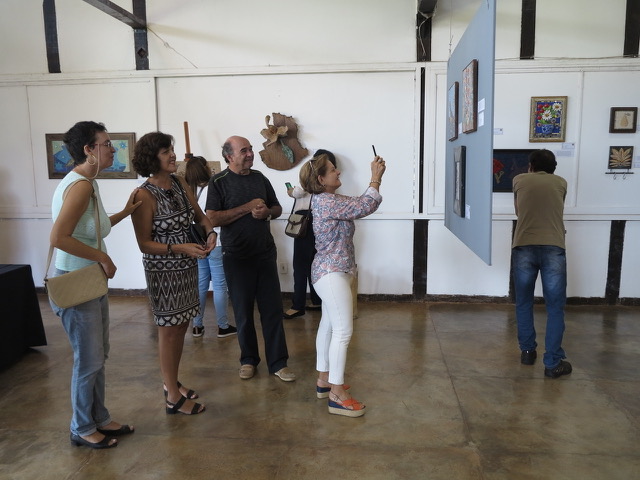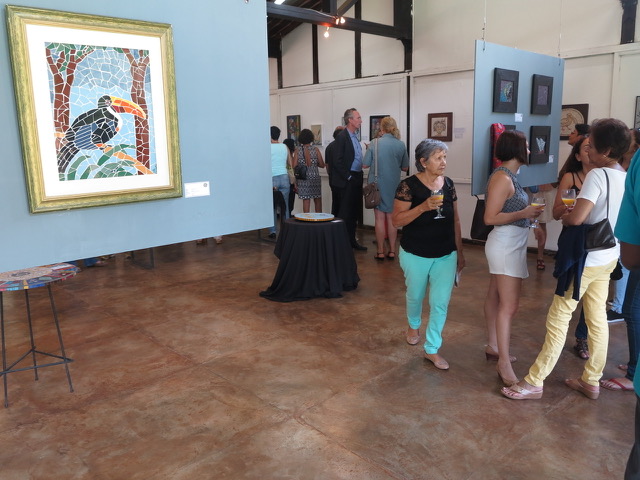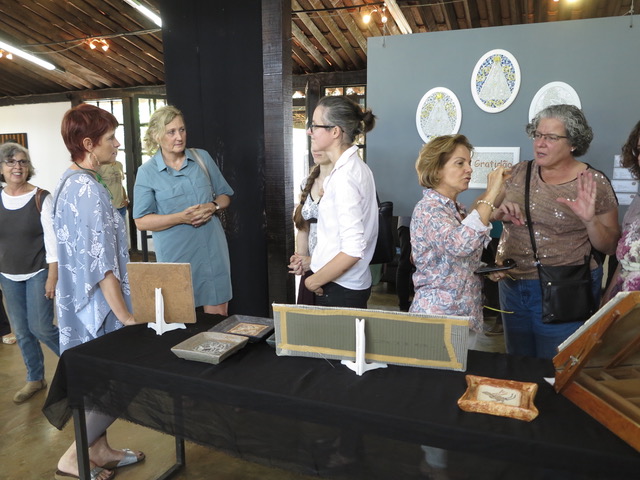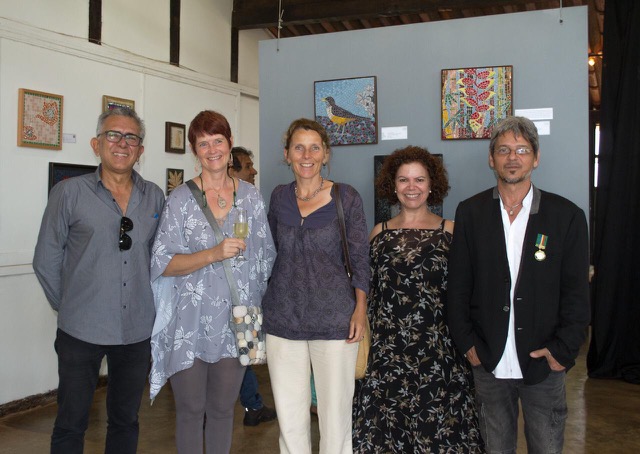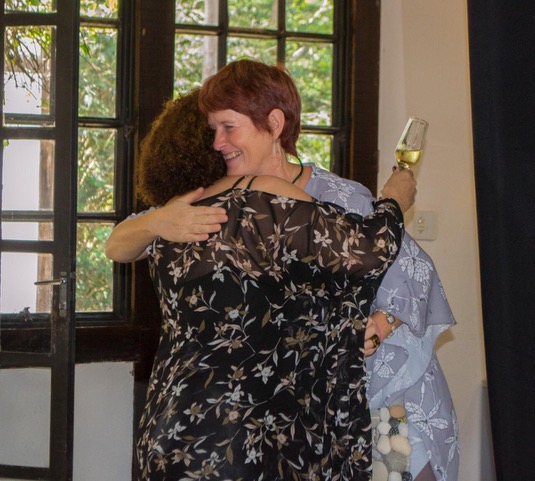@ mosaic arts international exhibition in Nashville/TN/USA
The Mosaic Arts International: Architectural & Site-Specific segment is a juried exhibit of the best in contemporary architectural and in situ mosaics from SAMA’s diverse international membership. This segment was juried by Kim Emerson, Award Winning Public Artist and Founder of the San Diego Mosaic School, San Diego, California, USA. The 19 installations selected are represented at the Nashville Public Library Art Gallery through print and digital images, video, and a collection of ephemera provided by the artists. Materials on display will including drawings, sketchbooks, materials samples and tools that will provide visitors a unique perspective into the process of creating a large-scale mosaic work. The exhibition features the works of 19 artists from the United States, Canada, Australia, and Brazil, including “Athos meets Gaudi” by Gertrud Müller, mosaic moments studio, Brasilia, Brazil.
Gertrud Müller is a german national currently working in Brasilia, Brazil. She is the founder of mosaic moments studio where she is offering classes in classic mosaic and is organizing community mosaic projects next to her own mosaic work. Interested in a project? Please contact gertrud.muller@gmail.com
For more information on the full 2019 Mosaic Arts International Exhibition Series, visit, https://americanmosaics.org/mosaic-arts-international/2019
